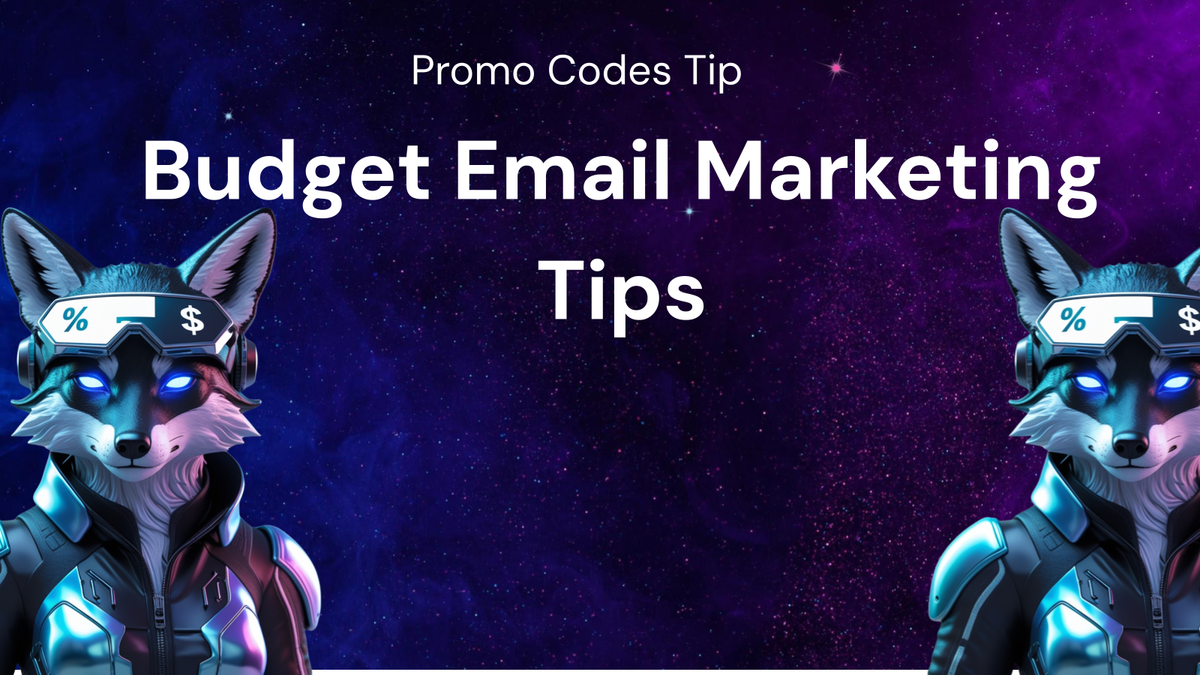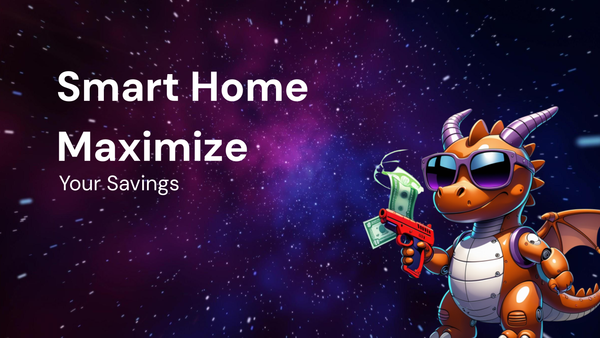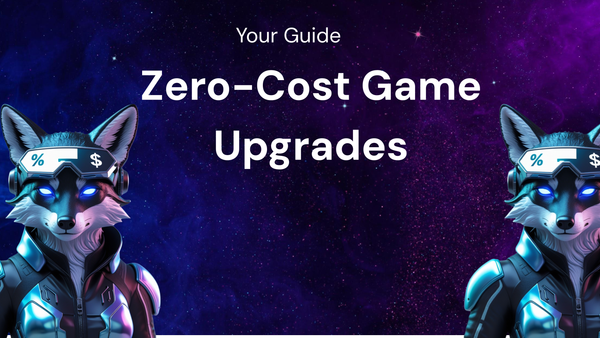Top 10 Tips for Budgeting Email Marketing with Promo Codes

Top 10 Tips for Budgeting Email Marketing with Promo Codes
Email marketing, often hailed as the cornerstone of digital marketing, remains a highly effective channel for connecting with your audience, nurturing leads, and driving sales. However, leveraging its power effectively requires careful planning, especially when incorporating promo codes, which can significantly impact your budget. While discounts and special offers are potent incentives, poorly managed promotional campaigns can quickly drain resources and erode profitability. This comprehensive guide provides ten actionable tips to optimize your email marketing budget while maximizing the impact of your promo code campaigns.
1. Define Clear Objectives and KPIs (Key Performance Indicators)
Before diving into crafting email campaigns and generating promo codes, it's crucial to establish clear and measurable objectives. What do you hope to achieve with your email marketing efforts and specific promo code campaigns? Are you aiming to:
- Increase Sales? Define a target revenue increase (e.g., "Increase online sales by 15% within Q3").
- Acquire New Customers? Set a target for new customer acquisition (e.g., "Acquire 500 new email subscribers in July").
- Boost Website Traffic? Establish a target for website visits (e.g., "Increase website traffic from email campaigns by 20%").
- Re-engage Inactive Subscribers? Define a re-engagement rate (e.g., "Re-engage 10% of inactive subscribers within the next month").
- Promote a Specific Product or Service? Target sales numbers for that item.
Once you've defined your objectives, identify the relevant KPIs that will track your progress. These metrics will allow you to assess the effectiveness of your campaigns, refine your strategies, and make data-driven decisions about budget allocation. Common KPIs for email marketing with promo codes include:
- Open Rate: The percentage of recipients who opened your email.
- Click-Through Rate (CTR): The percentage of recipients who clicked on a link in your email (especially the promo code link).
- Conversion Rate: The percentage of recipients who completed a desired action (e.g., made a purchase, signed up for a webinar) after clicking on a link in your email.
- Redemption Rate: The percentage of recipients who actually used the promo code. This is critical for evaluating the promo's financial impact.
- Return on Investment (ROI): The profit generated from the email campaign relative to the cost of the campaign.
- Average Order Value (AOV): The average amount spent per order placed using the promo code.
- Customer Lifetime Value (CLTV): Predicts the total revenue a customer is expected to generate throughout their relationship with your business. Using promos can encourage initial purchases that lead to higher CLTV.
- Unsubscribe Rate: The percentage of recipients who unsubscribed from your email list after receiving your email. A high unsubscribe rate might indicate issues with your targeting, content, or the frequency of your emails.
By meticulously tracking these KPIs, you can identify what's working, what's not, and where to adjust your budget and strategies for optimal results.
2. Segment Your Email List for Targeted Promotions
Sending the same email with the same promo code to your entire subscriber list is a recipe for wasted resources and low engagement. Effective email marketing relies on segmentation – dividing your audience into smaller, more targeted groups based on shared characteristics. This allows you to tailor your messaging and offers to resonate with specific segments, leading to higher open rates, click-through rates, and conversion rates.
Common segmentation criteria include:
- Demographics: Age, gender, location, income level, education.
- Purchase History: Past purchases, order frequency, average order value, products viewed.
- Website Activity: Pages visited, content downloaded, forms submitted.
- Email Engagement: Open rates, click-through rates, subscription date.
- Customer Lifecycle Stage: New subscribers, active customers, inactive customers, churned customers.
- Interests: Based on surveys, website behavior, or content interaction.
For example, instead of sending a generic 10% off promo code to your entire list, consider segmenting your audience and offering:
- A higher discount (e.g., 20% off) to new subscribers to incentivize their first purchase.
- A free shipping promo code to loyal customers who have made multiple purchases.
- A "we miss you" discount to re-engage inactive subscribers.
- Product-specific discounts to customers who have viewed those products on your website.
By tailoring your promo codes and messaging to the specific needs and interests of each segment, you'll significantly increase the likelihood of engagement and conversion, maximizing the ROI of your email marketing budget. Remember to A/B test different segmentations and offers to discover what resonates most with your audience.
3. Craft Compelling Email Copy and Design
Even the most enticing promo code will fall flat if your email is poorly written or visually unappealing. Your email copy and design should work together to capture attention, communicate value, and drive action. Here are some key elements to consider:
- Subject Line: The subject line is the first (and often only) impression you make. It should be concise, attention-grabbing, and clearly communicate the value proposition of your email. Use keywords, numbers, and a sense of urgency to entice recipients to open your email. Examples: "24 Hours Only: 20% Off Everything!", "Free Shipping + Exclusive Offer Inside", "Don't Miss Out: Your Special Discount Awaits".
- Preheader Text: The preheader text is the short snippet of text that appears after the subject line in most email clients. Use this space to provide additional context or reinforce your offer.
- Email Body: Keep your email body concise, clear, and focused on the value proposition of your promo code. Use a visually appealing design with high-quality images or graphics. Highlight the promo code prominently and make it easy for recipients to copy and paste. Use clear calls to action (CTAs) that encourage recipients to take the desired action (e.g., "Shop Now," "Redeem Your Discount," "Claim Your Offer").
- Mobile Optimization: Ensure that your email is responsive and looks great on all devices, especially mobile phones. A significant portion of your audience will be opening your emails on their smartphones, so mobile optimization is crucial for maximizing engagement.
- Personalization: Use personalization tokens to address recipients by name and tailor your messaging to their specific interests. Personalization can significantly improve open rates and click-through rates.
- Brand Consistency: Maintain a consistent brand identity across all your email marketing materials. Use your brand colors, fonts, and logo to create a cohesive and recognizable brand experience.
A well-designed and written email will not only capture attention but also effectively communicate the value of your promo code, leading to higher conversion rates and a better ROI for your email marketing budget. Consider investing in professional email design or copywriting if you lack the internal resources.
4. Strategically Choose Promo Code Types and Values
The type and value of your promo code can have a significant impact on its effectiveness and profitability. Consider the following factors when choosing the right promo code strategy:
- Percentage Discounts: Offer a percentage discount (e.g., 10% off, 20% off, 50% off). Percentage discounts are generally more appealing to customers as they offer a tangible saving on their entire purchase. These work well for higher-priced items.
- Fixed Amount Discounts: Offer a fixed amount discount (e.g., $10 off, $20 off). Fixed amount discounts can be particularly effective for lower-priced items or when you want to incentivize specific purchases.
- Free Shipping: Offer free shipping on orders over a certain amount. Free shipping is a highly valued incentive, especially for online shoppers.
- Buy-One-Get-One (BOGO) Offers: Offer a buy-one-get-one free or discounted offer. BOGO offers can be a great way to clear out inventory or promote specific products.
- Free Gift with Purchase: Offer a free gift with a purchase of a certain value. Free gifts can add extra value to the customer's purchase and incentivize them to spend more.
- Tiered Discounts: Offer different discounts based on the order value (e.g., 10% off orders over $50, 15% off orders over $100). This encourages higher spending.
When determining the value of your promo code, consider your profit margins, target audience, and marketing objectives. Too small a discount might not be enticing enough, while too large a discount could erode your profitability. A/B test different promo code values to find the sweet spot that maximizes conversions and maintains a healthy profit margin. Also, consider the perceived value vs. the actual cost to your business. A free gift of something you already have in abundance might be a more cost-effective promo than a percentage discount.
5. Implement Time-Sensitive Promo Codes
Creating a sense of urgency is a powerful way to drive immediate action. Time-sensitive promo codes, with limited-time validity, encourage recipients to make a purchase sooner rather than later. Here are some tips for implementing time-sensitive promo codes:
- Clearly Communicate the Expiration Date: Make the expiration date of your promo code prominent in your email subject line and body.
- Use Countdown Timers: Incorporate a countdown timer in your email to visually emphasize the limited-time nature of the offer.
- Send Reminder Emails: Send reminder emails to recipients who haven't yet redeemed their promo code as the expiration date approaches. This can provide a final nudge and increase conversion rates.
- Create a Sense of Scarcity: Highlight the limited quantity of products available or the limited number of promo codes available. Scarcity can create a fear of missing out (FOMO) and encourage immediate action.
Examples of time-sensitive promo codes:
- "24-Hour Flash Sale: 20% Off Everything!"
- "Last Chance: Free Shipping Ends Tonight!"
- "Your Exclusive Discount Expires in 48 Hours!"
By implementing time-sensitive promo codes, you can create a sense of urgency, drive immediate action, and boost sales within a specific timeframe.
6. Automate Your Email Marketing with Promo Codes
Email marketing automation can significantly streamline your workflow, improve efficiency, and enhance the customer experience. Automation allows you to send targeted emails with promo codes to specific segments of your audience based on triggers or events. Here are some examples of how to automate your email marketing with promo codes:
- Welcome Emails: Send a welcome email with a promo code to new subscribers to incentivize their first purchase.
- Abandoned Cart Emails: Send an email to customers who have abandoned their shopping cart with a promo code to encourage them to complete their purchase.
- Birthday Emails: Send a birthday email with a special promo code to customers on their birthday.
- Anniversary Emails: Send an anniversary email with a promo code to customers on the anniversary of their first purchase.
- Re-engagement Emails: Send a re-engagement email with a promo code to inactive subscribers to encourage them to re-engage with your brand.
- Post-Purchase Emails: Send a post-purchase email with a promo code to thank customers for their order and encourage them to make another purchase.
By automating your email marketing with promo codes, you can deliver personalized and timely offers to your audience, improving engagement, conversion rates, and customer loyalty while freeing up your time to focus on other aspects of your marketing strategy. Most email marketing platforms offer built-in automation features; explore and leverage them.
7. A/B Test Your Email Campaigns and Promo Codes
A/B testing, also known as split testing, is a crucial component of optimizing your email marketing campaigns. It involves testing different versions of your email to see which performs better. This allows you to make data-driven decisions about your email design, copy, and promo code strategy.
Elements you can A/B test include:
- Subject Lines: Test different subject lines to see which generates the highest open rates.
- Email Body: Test different layouts, images, and calls to action.
- Promo Code Value: Test different percentage discounts or fixed amount discounts.
- Promo Code Type: Test different types of promo codes, such as free shipping or BOGO offers.
- Segmentation: Test different segmentation criteria to see which segments respond best to your offers.
- Send Time: Test different send times to see when your audience is most likely to open and engage with your emails.
When A/B testing, make sure to test only one element at a time so you can accurately attribute the results to the specific change you made. Use a statistically significant sample size to ensure that your results are reliable. Analyze your results carefully and use the data to inform your future email marketing decisions. A/B testing is an ongoing process, so continuously test and optimize your campaigns to achieve the best possible results.
8. Track and Analyze Your Results
Tracking and analyzing your results is essential for understanding the effectiveness of your email marketing campaigns and promo codes. Use your email marketing platform to track key metrics such as open rates, click-through rates, conversion rates, redemption rates, and ROI. Analyze your data to identify trends, patterns, and areas for improvement.
- Monitor Your Promo Code Redemption Rate: This metric shows you how many people are actually using the codes you send out. A low redemption rate might signal that the offer isn't appealing enough, or that the code is too difficult to use.
- Segment Your Data: Analyze your results by segment to see how different groups of customers are responding to your campaigns. This can help you identify which segments are most valuable and which need more targeted messaging.
- Track Your ROI: Calculate the ROI of your email marketing campaigns to determine whether they are generating a positive return on investment. If your ROI is low, consider adjusting your strategy or reallocating your budget.
- Use Google Analytics: Integrate your email marketing platform with Google Analytics to track website traffic and conversions from your email campaigns. This will give you a more comprehensive view of the impact of your email marketing efforts.
By tracking and analyzing your results, you can gain valuable insights into what's working and what's not, allowing you to optimize your campaigns, improve your ROI, and make data-driven decisions about your budget allocation.
9. Comply with Email Marketing Regulations
It's crucial to comply with email marketing regulations, such as the CAN-SPAM Act in the United States and GDPR in Europe, to avoid legal penalties and maintain a positive brand reputation. Key requirements include:
- Obtain Consent: Obtain explicit consent from subscribers before sending them marketing emails.
- Provide an Unsubscribe Option: Make it easy for subscribers to unsubscribe from your email list. Include a clear and conspicuous unsubscribe link in every email.
- Include Your Physical Address: Include your valid physical postal address in every email.
- Avoid Deceptive Subject Lines: Use accurate and non-misleading subject lines.
- Honor Unsubscribe Requests Promptly: Process unsubscribe requests promptly and remove subscribers from your mailing list.
Failure to comply with email marketing regulations can result in significant fines and damage your brand reputation. Stay informed about the latest regulations and ensure that your email marketing practices are compliant.
10. Leverage Email Marketing Software Effectively
Choosing the right email marketing software is critical for effectively managing your campaigns, automating your processes, and tracking your results. Numerous email marketing platforms are available, each with its own features and pricing. Consider your specific needs and budget when selecting a platform.
Key features to look for include:
- Segmentation: Advanced segmentation capabilities to target specific groups of subscribers.
- Automation: Automation features to send triggered emails and create automated workflows.
- A/B Testing: A/B testing tools to test different versions of your email campaigns.
- Reporting and Analytics: Comprehensive reporting and analytics to track key metrics and measure your results.
- Integration: Integration with other marketing tools, such as CRM systems and e-commerce platforms.
- Deliverability: High deliverability rates to ensure that your emails reach your subscribers' inboxes.
- Pricing: A pricing structure that aligns with your budget and the size of your email list.
Popular email marketing platforms include Mailchimp, Klaviyo, Sendinblue, ActiveCampaign, and Constant Contact. Compare the features and pricing of different platforms before making a decision. Once you've chosen a platform, invest time in learning how to use it effectively.
Conclusion
Budgeting for email marketing with promo codes requires a strategic approach that focuses on clear objectives, targeted messaging, data-driven decisions, and compliance with regulations. By implementing these ten tips, you can optimize your email marketing budget, maximize the impact of your promo code campaigns, and achieve your marketing goals. Remember to continuously track your results, adapt your strategies, and stay informed about the latest trends and best practices in email marketing. By mastering the art of email marketing with promo codes, you can unlock a powerful channel for driving sales, acquiring new customers, and building lasting relationships with your audience.




